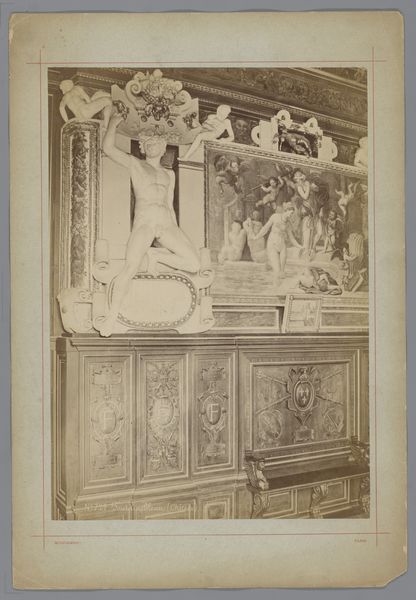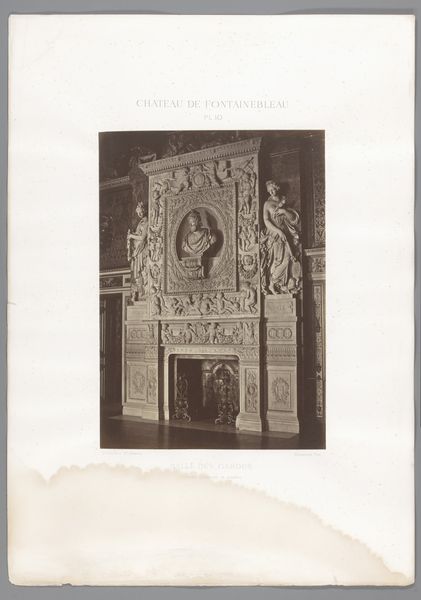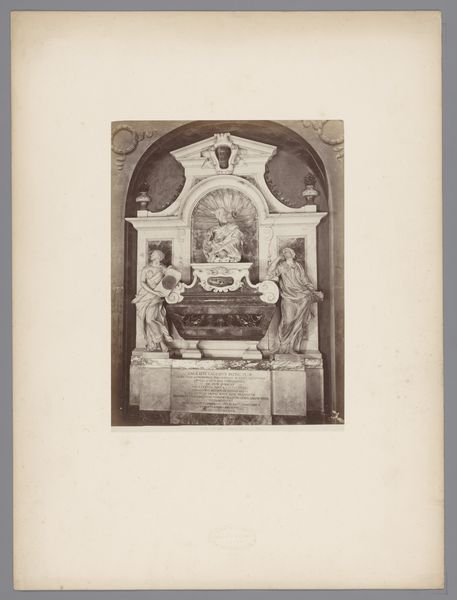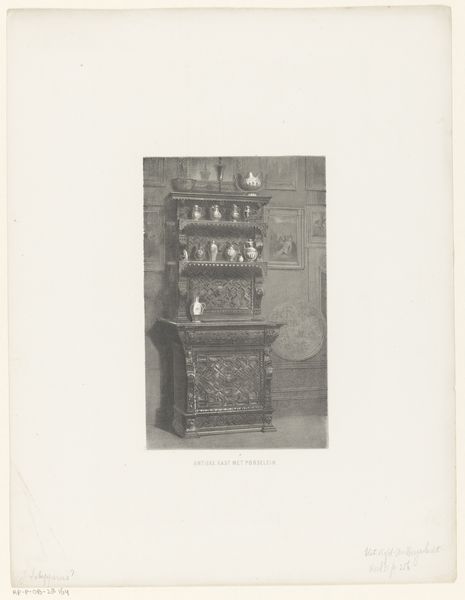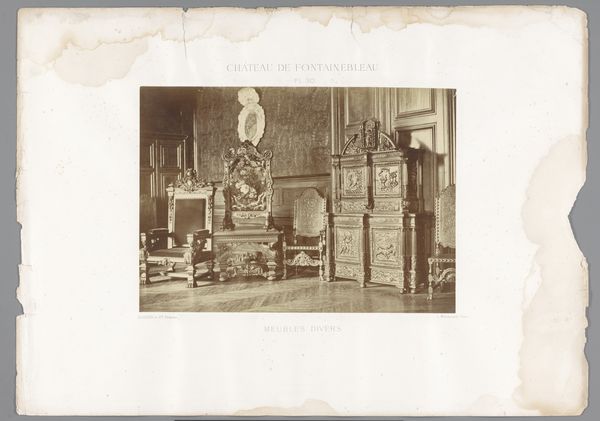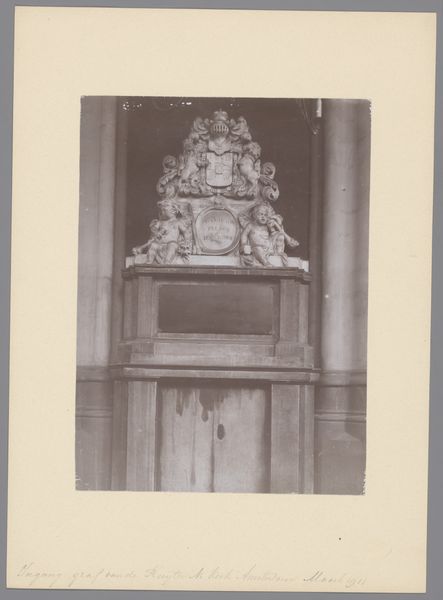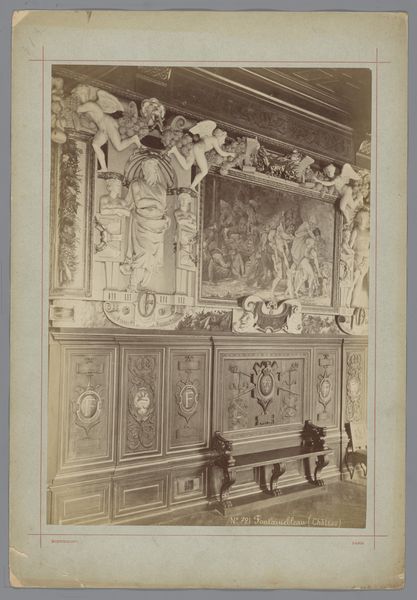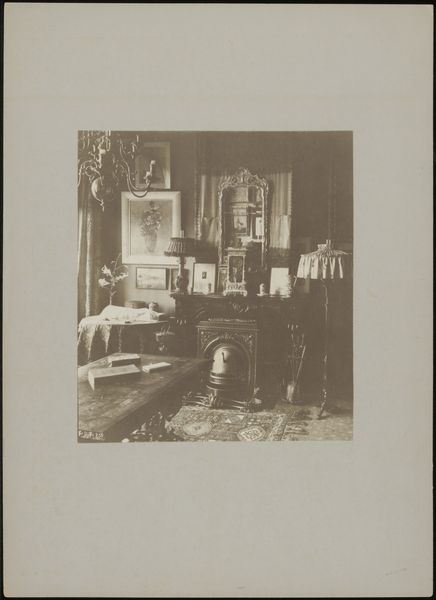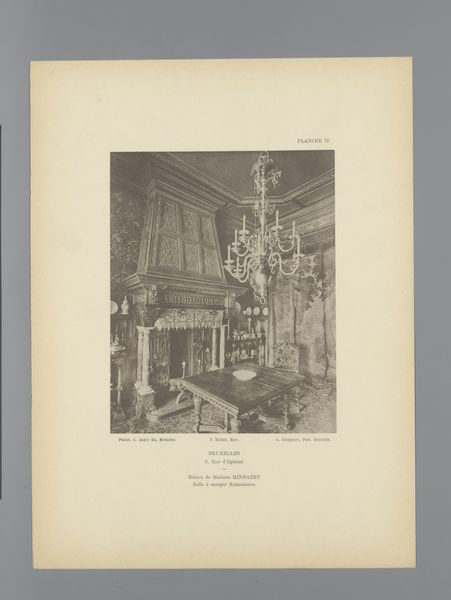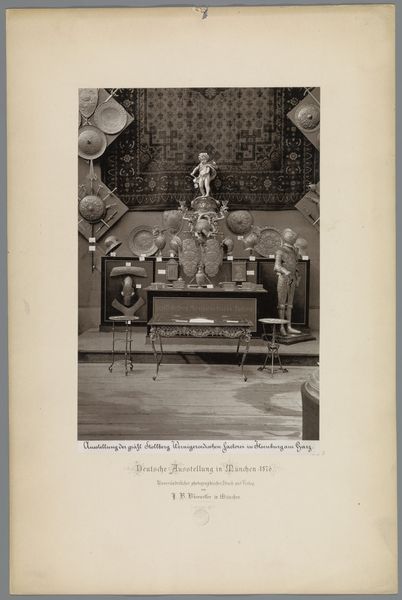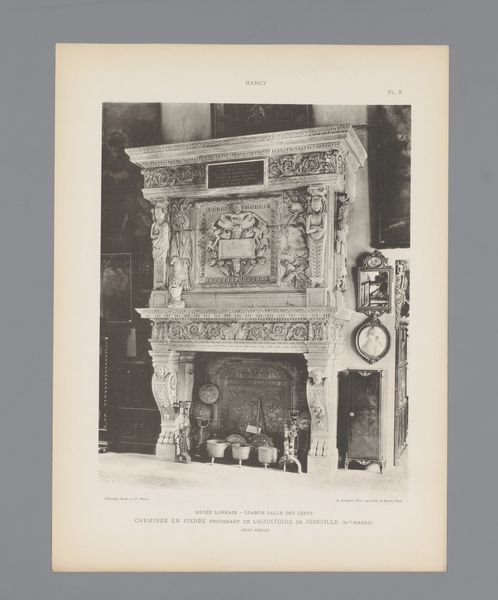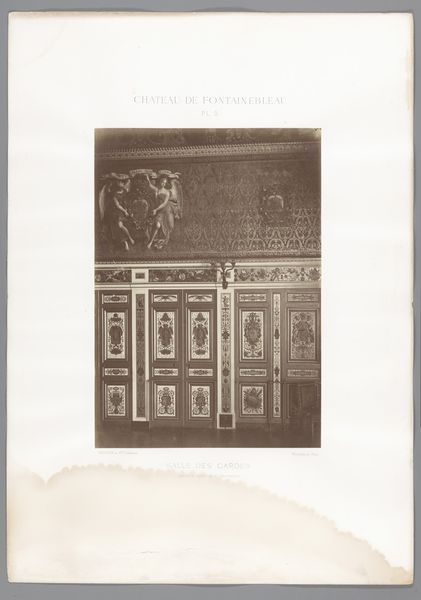
Gezicht op een muur met decoraties in de Galerie François Ier van het Kasteel van Fontainebleau, Frankrijk before 1875
0:00
0:00
medericmieusement
Rijksmuseum
Dimensions: height 353 mm, width 250 mm
Copyright: Rijks Museum: Open Domain
Editor: This is Médéric Mieusement's gelatin-silver print, "Gezicht op een muur met decoraties in de Galerie François Ier van het Kasteel van Fontainebleau, Frankrijk," dating from before 1875. The ornate detail and classical figures give it such a formal, almost performative air. What do you see in this piece, especially in relation to its historical context? Curator: This image resonates deeply, placing us at an intersection of power, representation, and artistic legacy. We aren't simply looking at decoration; we're witnessing a carefully constructed narrative of French royalty and its connection to classical ideals, captured during a period of intense social and political upheaval. Notice how photography, a relatively new medium at the time, is used to document and, in a way, legitimize the grandeur of the past. How does that tension – between the objective eye of the camera and the constructed reality of the royal image – speak to you? Editor: I find it fascinating that photography, often associated with capturing 'reality,' is used here to reinforce a specific, idealized version of history. It’s almost like visual propaganda. Curator: Precisely. And let’s consider who this space was *for*. Palaces like Fontainebleau weren't simply residences; they were stages where power was performed, gender roles were reinforced, and social hierarchies were visually codified. The classical allusions, the imposing scale—they all work to communicate a message of authority and cultural superiority. Doesn't it make you consider what that iconography would exclude, what it hides? Editor: It really highlights the exclusive nature of power, and how art served to maintain it. I hadn't considered the photograph itself as a tool in that process. Curator: It makes us rethink photography's supposed objectivity. We have to consider its use in solidifying specific power structures. The camera has the power to solidify power dynamics and dictate history. Editor: That's a really thought-provoking approach. It changes how I perceive not only the artwork, but also the historical moment.
Comments
No comments
Be the first to comment and join the conversation on the ultimate creative platform.
